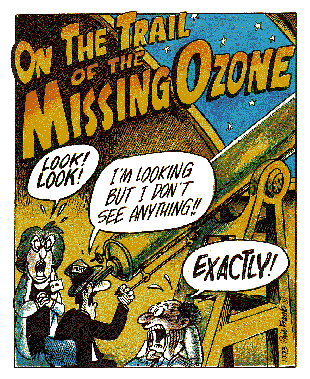The first measurements of really low ozone levels were made over Antarctica in 1985. The levels were so low that the scientists who made them thought they weren't true, and that their instruments were faulty. It wasn't until later, when new instruments were used, that these low values were found to be true.
At the same time, ozone levels were being made from space aboard a satellite using an instrument called TOMS (Total Ozone Mapping Spectrometer). This instrument also didn't pick up the low ozone values because values recorded below an certain value were assumed to be errors. It was only later, when the raw data was reprocessed, that the results confirmed what nobody wanted to believe.
Very intensive research then began and former warnings about the potential harmful impact of chlorofluorocarbons (CFC's) on ozone levels were rediscovered. As a result, CFC's were banned as part of the Montreal Protocol. Discovery of the ozone hole showed that we humans are capable of altering climate globally. It also proved that rapid world-wide action can be taken to slow down climate change.
|
 |
 |
 |
|
On the trail of the missing ozone ...
© US Environmental Protection Agency
|
|







